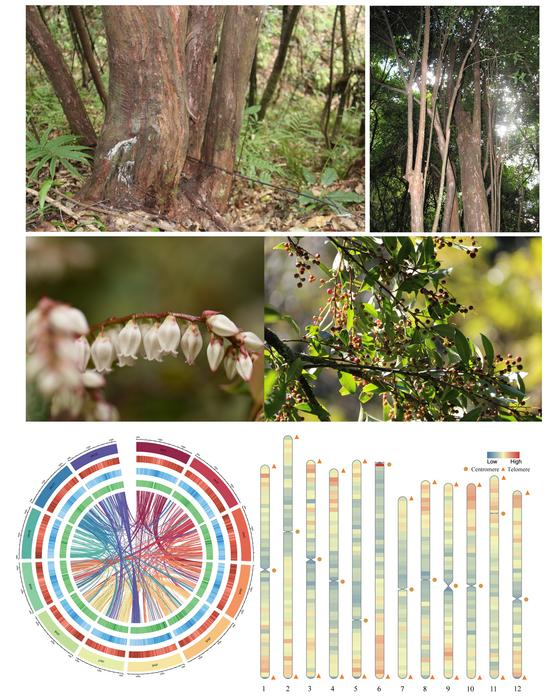Blueberries, belonging to the Vaccinium genus and characterized by their petite size, are renowned for their delectable flavor, harmonious blend of sweetness and acidity, and impressive nutritional profile. They are rich in a diverse array of vitamins and antioxidants.
 Vaccinium duclouxii trees and their high-quality T2T genome assembly. Image Credit: Horticulture Research.
Vaccinium duclouxii trees and their high-quality T2T genome assembly. Image Credit: Horticulture Research.
Nevertheless, the development and utilization of cultivated blueberries have been significantly impeded by the limited genetic resources available. Hence, it is crucial to tap into the genetic reservoir of wild blueberries for breeding, aiming to enhance the resilience and quality of cultivated varieties.
Vaccinium duclouxii, a wild blueberry species native to the southwestern region of China, possesses high nutritional, medicinal, and ornamental value, along with robust resistance and adaptability to various environments.
Unfortunately, its application and development have been severely constrained by the absence of a high-quality genome.
In October 2023, the study was published in Horticulture Research.
The study employed PacBio HiFi, ONT ultra-long, and Hi-C sequencing data for the telomere-to-telomere (T2T) de novo assembly of the V. duclouxii genome.
The assembled genome, totaling 573.67 Mb, successfully captured all 12 gapless chromosomes and included a total annotation of 41,953 genes. Repetitive sequences constituted 54.84%, resulting in the most comprehensive and high-quality genome for the Vaccinium genus.
Through the integration of transcriptomic and metabolomic analyses, the study unveiled the molecular mechanisms governing sugar and acid accumulation, as well as anthocyanin biosynthesis during the ripening of V. duclouxii.
This research establishes a foundation for comprehending the evolution of the Vaccinium genus and offers valuable insights for future genetic improvement and breeding endeavors in the realm of blueberries.
Source:
Journal reference:
Zeng, T., et al. (2023) The Telomere-to-telomere gap-free reference genome of wild blueberry (Vaccinium duclouxii) provides its high soluble sugar and anthocyanin accumulation. Horticulture Research. doi.org/10.1093/hr/uhad209.